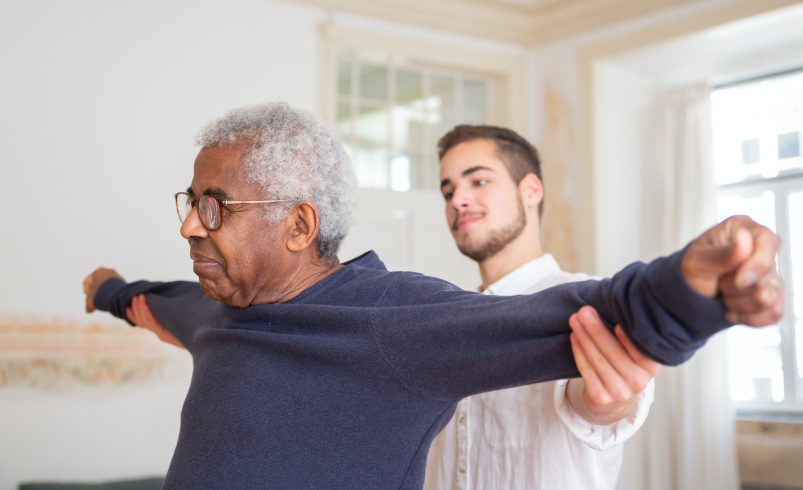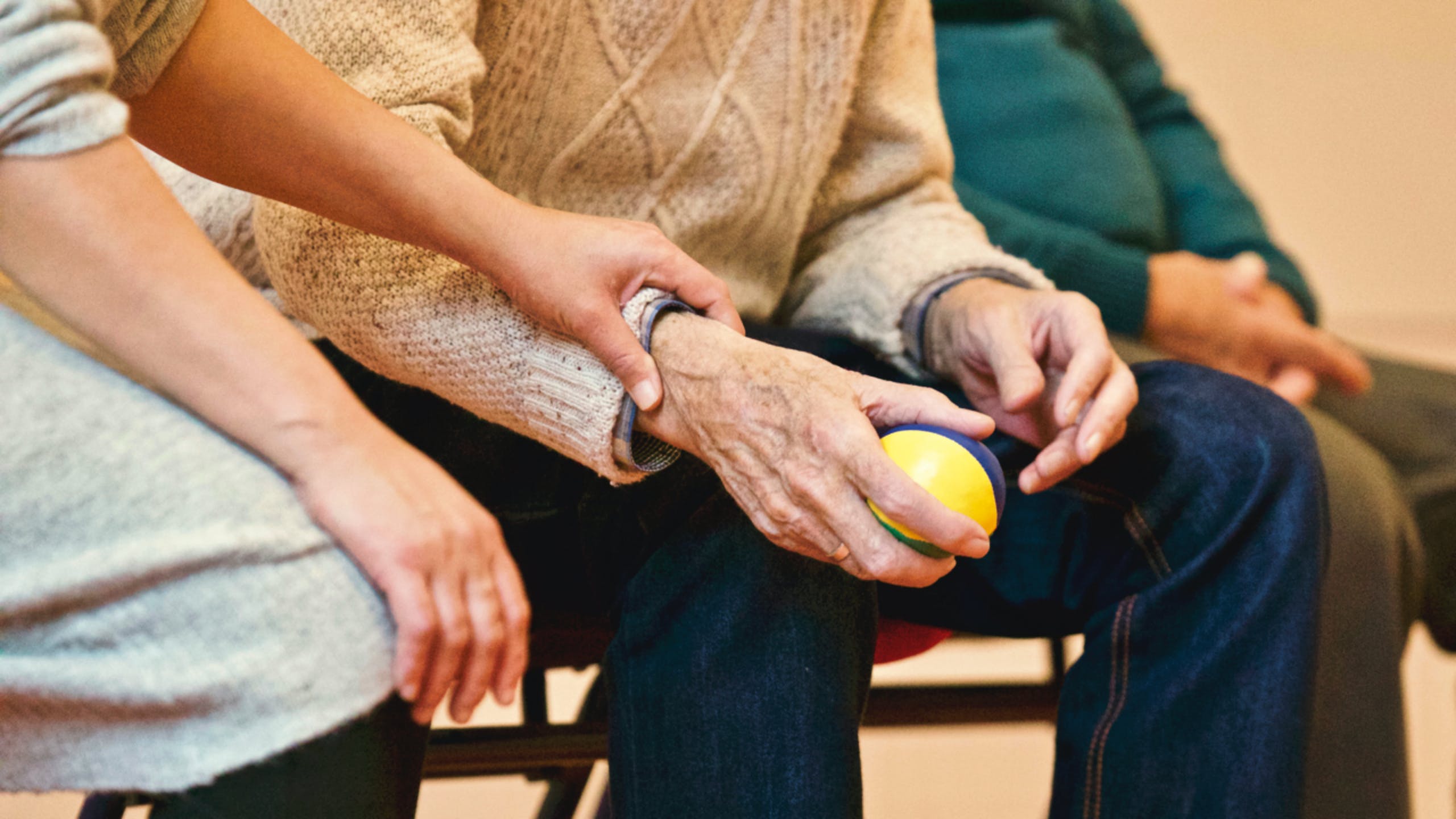Can Exercise Help Manage Parkinson’s Symptoms?

Parkinson’s disease (PD) is a progressive neurological disorder that affects movement and can also cause cognitive and emotional changes. It is estimated that around one million Americans are living with PD, with approximately 60,000 new cases diagnosed each year. There is currently no cure for PD, but there are various treatments available to manage symptoms.
Exercise has long been recommended as a beneficial activity for individuals with PD. In recent years, studies have shown that exercise can not only help improve motor symptoms such as tremors and balance issues but also provide benefits for non-motor symptoms like depression and anxiety. In this article, we will discuss the potential benefits of exercise in managing Parkinson’s disease and some recommended exercises to incorporate into your routine.
What Causes Parkinson’s Disease?
PD is caused by the degeneration of dopamine-producing neurons in a region of the brain called the substantia nigra. Dopamine is a neurotransmitter that plays a crucial role in controlling movement and cognition. As these cells die, there is a decrease in dopamine levels, leading to dysfunction in movement and other areas.
The exact cause of this degeneration is still unknown, but researchers believe it may be a combination of genetic and environmental factors. Aging is also a significant risk factor for PD, with the majority of cases diagnosed in individuals over 60 years old.
Benefits of Exercise for Parkinson’s Disease
Exercise has been shown to have a positive impact on physical, cognitive, and emotional symptoms associated with Parkinson’s disease. Regular exercise can improve motor function by increasing muscle strength, flexibility, and balance. It can also help reduce falls and improve overall mobility.
In addition to the physical benefits, exercise also has a positive effect on non-motor symptoms of PD. Studies have shown that exercise can improve cognitive function, reduce anxiety and depression, and increase overall quality of life for individuals with PD.
Additionally, exercise can also help manage some of the side effects of medications commonly used to treat PD. These include dyskinesia (involuntary movements) and constipation.
Can Exercise Help Manage Parkinson’s Symptoms?
Exercise is not a cure for Parkinson’s, but it can significantly help manage symptoms and improve overall quality of life. It is recommended that individuals with PD engage in at least 30 minutes of moderate to vigorous exercise daily. This can include activities such as walking, biking, swimming, dancing, or even tai chi.
It is essential to consult with a healthcare professional before starting any exercise routine, as they can provide personalized recommendations based on individual needs and abilities. Physical therapy may also be beneficial in creating an exercise plan tailored to specific PD symptoms.
In addition to physical activity, incorporating activities that challenge the mind, such as puzzles or memory games, can also be beneficial for cognitive function.
Recommended Exercises for Parkinson’s Disease
While any form of exercise is beneficial for individuals with PD, certain types may offer more significant advantages. These include:
- Aerobic exercises such as walking, cycling, and dancing can improve cardiovascular health, muscle strength, and balance.
- Strength training can help build and maintain muscle mass, which is essential for individuals with PD who may experience muscle wasting due to inactivity or medication side effects.
- Balance and flexibility exercises such as tai chi, yoga, or Pilates can improve stability and reduce the risk of falls.
- Boxing or non-contact martial arts have been shown to improve balance, coordination, and confidence in individuals with PD.
- Swimming and water aerobics can be beneficial for individuals with PD as it is a low-impact form of exercise that can improve muscle strength without putting stress on joints.
How Excercise Can Be Incorporated Into Daily Routine
Exercise doesn’t have to be a daunting or time-consuming task for individuals with PD. Simple changes in daily routines can also provide benefits. For example:
- Taking the stairs instead of the elevator: can increase physical activity without taking up extra time.
- Walking or biking instead of driving: short distances can not only improve cardiovascular health but also reduce carbon emissions.
- Incorporating exercise during everyday tasks: such as performing bicep curls while watching TV or practicing balance exercises while brushing teeth.
- Joining a local exercise group: can provide social support and motivation, as well as opportunities to try new activities.
Symptoms of Parkinson’s Disease That May Affect Exercise
Individuals with PD may experience various symptoms that can make exercise more challenging. These include:
- Tremors: involuntary shaking, usually in the hands, arms, or legs.
- Bradykinesia: slowness of movement and difficulty initiating voluntary movements.
- Rigidity: stiffness and resistance in the muscles, making movement difficult.
- Postural instability: impaired balance and difficulty maintaining a steady posture.
It is essential to work with a healthcare professional to develop an exercise plan that takes these symptoms into account. They can also provide modifications or accommodations as needed.
Mistakes that Should be Avoided While Exercising With Parkinson’s Disease
While exercise can provide numerous benefits for individuals with PD, it is essential to avoid certain mistakes that can worsen symptoms or lead to injury. These include:
- Overexertion: pushing oneself too hard can cause fatigue and increase the risk of falling.
- Not warming up or cooling down: stretching and gradually increasing or decreasing activity can prevent muscle strains and improve overall performance.
- Exercising in extreme temperatures: hot weather can cause fatigue, while cold weather can worsen rigidity and tremors.
- Not taking medications on time: timing exercise around medication schedules can help maintain mobility during physical activity.
FAQs
Do I need to consult with a healthcare professional before starting an exercise routine?
Yes, it is essential to consult with a healthcare professional before starting any exercise routine. They can provide personalized recommendations based on individual needs and abilities.
What are some recommended exercises for Parkinson’s disease?
Recommended exercises include aerobic activities such as walking or cycling, strength training, balance and flexibility exercises like tai chi or yoga, and non-contact martial arts.
Can exercise help manage non-motor symptoms of Parkinson’s disease?
Yes, studies have shown that exercise can improve cognitive function, reduce anxiety and depression, and increase overall quality of life for individuals with PD. It may also help manage side effects of medications commonly used to treat PD.
Are there any mistakes I should avoid while exercising with Parkinson’s disease?
Yes, it is essential to avoid overexertion, not warming up or cooling down properly, exercising in extreme temperatures, and not taking medications on time. It is also crucial to listen to your body and modify exercises as needed.
Conclusion
Physical activity is an essential aspect of managing Parkinson’s disease and can provide numerous benefits for both physical and mental health. It is crucial to consult with a healthcare professional before starting any exercise routine and to make modifications as needed based on individual symptoms.
By incorporating exercise into daily routines, individuals with PD can improve their overall quality of life and potentially slow the progression of the disease. So, whether it be a brisk walk around the neighborhood or a weekly yoga class, finding enjoyable and manageable ways to stay active can make a significant impact on Parkinson’s disease management.





